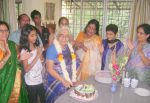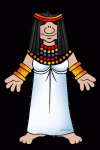Well, we’re almost at the end of the year!! It’s a time when students and teachers alike start to look forward to the long, summer break. Generally a time for celebrations and looking back over the highlights of the year – which is reflected in the activities for the final lessons of the Understanding Our World® HASS Units. All of the Understanding Our World® HASS Units run over 9 weeks, to make sure that everyone has a chance to breathe and catch up on the inevitable weeks when other activities cut short lesson times. So this week is the last week of our HASS units for the year!
Foundation / Kindy / Prep to Year 3
 Our youngest students in Foundation/Prep/Kindy (Unit F.4) and those in classes integrated with Year 1 (Unit F-1.4) are performing their class play: “People in the Past” this week. This performance brings together their work over the whole term, from the stories read in the first lesson, to the props and costumes prepared and the lines and individual performances practised. Furthermore, aspects of the year-long approach to learning about how the past (and others’ experiences) differ from today are brought together. It is also a great opportunity for parents and other carers to attend and see what their children have been working on. Since assessment is already completed, teachers can encourage students to just enjoy the performance, without feeling stressed about how it goes on the day – also a great vehicle for dealing with issues around resilience and supporting each other.
Our youngest students in Foundation/Prep/Kindy (Unit F.4) and those in classes integrated with Year 1 (Unit F-1.4) are performing their class play: “People in the Past” this week. This performance brings together their work over the whole term, from the stories read in the first lesson, to the props and costumes prepared and the lines and individual performances practised. Furthermore, aspects of the year-long approach to learning about how the past (and others’ experiences) differ from today are brought together. It is also a great opportunity for parents and other carers to attend and see what their children have been working on. Since assessment is already completed, teachers can encourage students to just enjoy the performance, without feeling stressed about how it goes on the day – also a great vehicle for dealing with issues around resilience and supporting each other.
 Slightly older students in Years 1 (Unit 1.4), 2 (Unit 2.4) and 3 (Unit 3.4) are also presenting their dramatisation or other presentation this week. Students in Year 1 have been comparing family structures from around the world and re-examining families in Australia. Students in Year 2 focus on the places special to families around the world, including Australia; while students in Year 3 focus on communities and the families within them in different countries around the world, including Australia.
Slightly older students in Years 1 (Unit 1.4), 2 (Unit 2.4) and 3 (Unit 3.4) are also presenting their dramatisation or other presentation this week. Students in Year 1 have been comparing family structures from around the world and re-examining families in Australia. Students in Year 2 focus on the places special to families around the world, including Australia; while students in Year 3 focus on communities and the families within them in different countries around the world, including Australia.
Years 3 to 6
 Students in Year 3 (Unit 3.8), 4 (Unit 4.4), 5 (Unit 5.4) and 6 (Unit 6.4) are celebrating with a class party this week! The party may be influenced by treats won through the Class Election held earlier in the term. Using one of the suggested Diversity themes for the party enables students to explore aspects covered throughout the term (and over the course of the year). Whether or not food is included in the party, students have a chance to explore cultural diversity through choosing decorations and colours, music, dress and other indicators of cultural identity. Students in Year 3 examine diversity within Australian communities by choosing from cultural groups in local communities. Students in Year 4 have been encouraged to consider the cultural identity of different Aboriginal groups, and others, within Australian society. Students in Year 5 incorporate what they have learned about people from Britain and Europe, as well as others, who came to Australia and their contributions to our society. Students in Year 6 have excellent opportunities to include aspects of Asian cultures, represented by people who have come to Australia from different parts of Asia. Students may even be able to enjoy the fruits of their Growing a Plant science activity, as part of their celebration!
Students in Year 3 (Unit 3.8), 4 (Unit 4.4), 5 (Unit 5.4) and 6 (Unit 6.4) are celebrating with a class party this week! The party may be influenced by treats won through the Class Election held earlier in the term. Using one of the suggested Diversity themes for the party enables students to explore aspects covered throughout the term (and over the course of the year). Whether or not food is included in the party, students have a chance to explore cultural diversity through choosing decorations and colours, music, dress and other indicators of cultural identity. Students in Year 3 examine diversity within Australian communities by choosing from cultural groups in local communities. Students in Year 4 have been encouraged to consider the cultural identity of different Aboriginal groups, and others, within Australian society. Students in Year 5 incorporate what they have learned about people from Britain and Europe, as well as others, who came to Australia and their contributions to our society. Students in Year 6 have excellent opportunities to include aspects of Asian cultures, represented by people who have come to Australia from different parts of Asia. Students may even be able to enjoy the fruits of their Growing a Plant science activity, as part of their celebration!
It is hoped that for all students the year can end on a high note, with lots of fun celebrations! Teachers can relax, confidant in the knowledge that their students have covered the entire curriculum, with all strands, for all the HASS subjects (including History, Geography, Civics and Citizenship and Economics and Business), as well as Science. The students are thus excellently prepared for their move up to a new year level next year, and Year 6s can move on to high school with a firm foundation, having already learnt many of the techniques and skills that will be built upon in secondary school.

 Foundation/Prep/Kindy to Year 3
Foundation/Prep/Kindy to Year 3 Students in Years 3 (
Students in Years 3 ( Students in standalone Foundation/Prep/Kindy (
Students in standalone Foundation/Prep/Kindy ( Students in Years 3 (
Students in Years 3 ( Students in standalone Foundation/Prep/Kindy classes (
Students in standalone Foundation/Prep/Kindy classes ( Students in Year 3 doing
Students in Year 3 doing
I was very impressed with the layout and design of the Mirobot. I purchased the kit which required soldering. The…
Ian Cunningham